General
Wild garlic is used in Austrian cuisine, especially in spring, as a tasty culinary herb. Wild garlic is used as a fresh herb for spreads, in soups, sauces or in salads. However, collectors should know the characteristics of the plant well: Wild garlic has some poisonous "doppelgangers". Eating these "doppelgangers" can lead to severe symptoms of poisoning and even death. In addition, unwashed wild garlic can be contaminated with various impurities. These can also cause serious secondary illnesses.
Recognize wild garlic correctly
Wild garlic(Allium ursinum L.) is a perennial, herbaceous bulbous plant of the amaryllis family. The allium occurs wild in almost all of Europe and northern Asia at various altitudes and prefers moist locations in deciduous and riparian forests.
The leaves of the bear's leek sprout individually close together from the ground in March and April, depending on the altitude. They are clearly divided into a leaf surface and a thin, triangular petiole. The leaves are lime green, lanceolate, pointed at the end. Their upper side is shiny, the underside is dull, the veins are slightly prominent and run parallel. The leaves bend slightly when fresh and are very easy to rub. When rubbed, wild garlic leaves smell strongly of leeks. The leaves should be harvested before the plant blooms, because after that they take on a bitter taste.
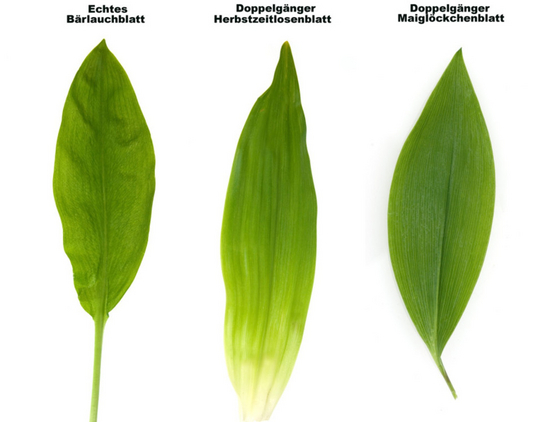
Again and again cases of poisoning occur, which in some cases can be fatal. When collecting wild garlic in native deciduous and mixed forests, it is often confused with meadow saffron, lily of the valley, spotted arum, many-flowered whiteroot (Solomon's seal) and feral tulips.
Situation in Austria
When collecting wild garlic in local deciduous and mixed forests, it is often confused with autumn crocus, lily of the valley, spotted arum, multiflora (Solomon's seal) and wild tulips. Both in the area of food safety and in seed testing, our experts are confronted every year with contamination of wild garlic with poisonous plants and deal with the identification and analysis of these poisonous plants and their toxins.
Recommendations for collecting and preparing wild garlic
- Leaves should be harvested one leaf at a time. If you pull out whole areas in bunches, you run the risk of harvesting leaves that are not suitable for consumption.
- When collecting wild garlic, one should know the plant well with all its characteristics in order to be able to distinguish it safely from its doppelgangers
- Who is not sure, should rather leave the fingers of wild wild garlic and fall back on wild garlic from the vegetable shelf
- Wash wild garlic leaves thoroughly under hot running water before eating or freezing, as they may be contaminated with fox tapeworm eggs. These can cause a life-threatening disease in humans with tumor-like growths, usually in the liver, that do not become apparent until many years after infection. The fox tapeworm eggs are not visible to the naked eye and survive common freezing temperatures of -18° Celsius. At temperatures around +60° Celsius, the eggs are killed.
- But beware, when rubbing wild garlic leaves, the intense smell of leek sticks to the fingers and can be deceiving in further samples, so always consider other distinguishing characteristics of the plant.

What to do in case of poisoning
In case of poisoning, it is recommended to consult a physician and the Poisoning Information Center (VIZ) (01/406 43 43) at Gesundheit Österreich GmbH (GÖG) without delay.
The following information is important:
- Information about the person (age, sex, weight).
- What and what quantity was ingested?
- When and where did the poisoning occur?
Supposed home remedies such as water or milk should never be administered without medical advice. Inducing vomiting can even be dangerous.
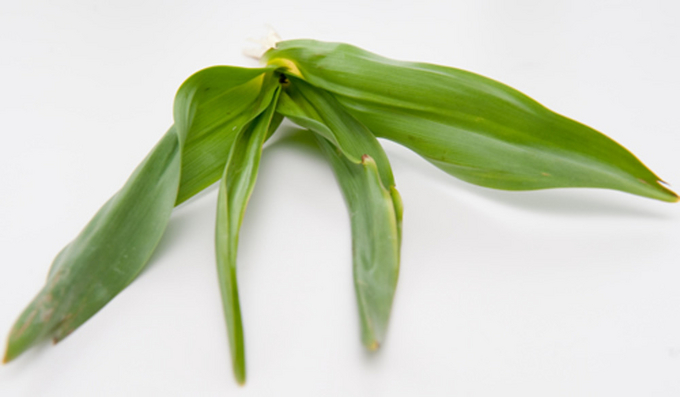
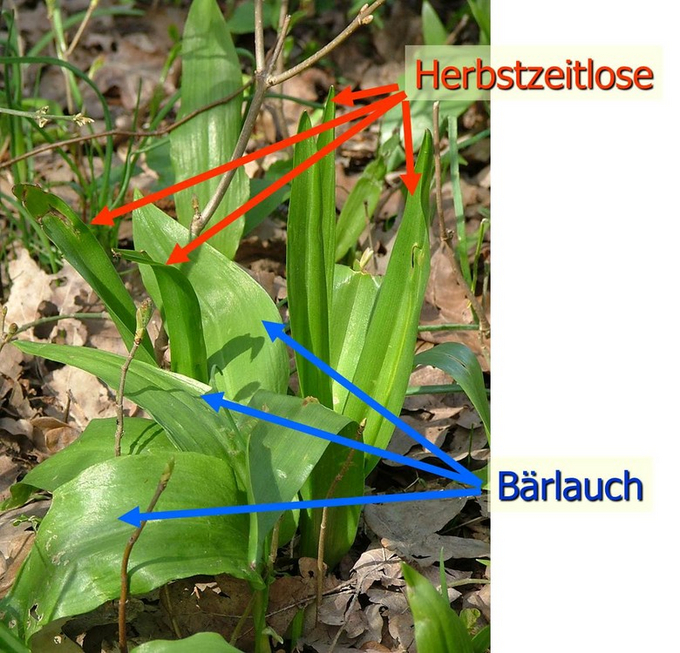
When wild garlic is pulled out in clumps, it can be contaminated with autumn crocus leaves. The leaves of the poisonous autumn crocus(Colchicum autumnale L.) can be distinguished from those of wild garlic by the following characteristics:
- The leaves are narrow, oblong-lanceolate and sit without a petiole on the stem, which remains in the ground
- They sprout from the ground in clusters, with the younger ones being embraced by the older ones
- The leaves of the autumn crocus are flexible, almost "rubbery" and do not bend when fresh like the leaves of wild garlic
- The leaves do not have clear ribs on the back like those of wild garlic
- They are difficult or impossible to rub together
- The leaves of the autumn crocus are odourless.
Eating three to four autumn crocus leaves can be enough to cause death. The cytotoxin (colchicine) they contain only takes effect after a few hours. The first symptoms of poisoning take the form of nausea and vomiting, followed by diarrhoea. Intestinal, blood and bone marrow cells are destroyed, which can lead to death after about two days.
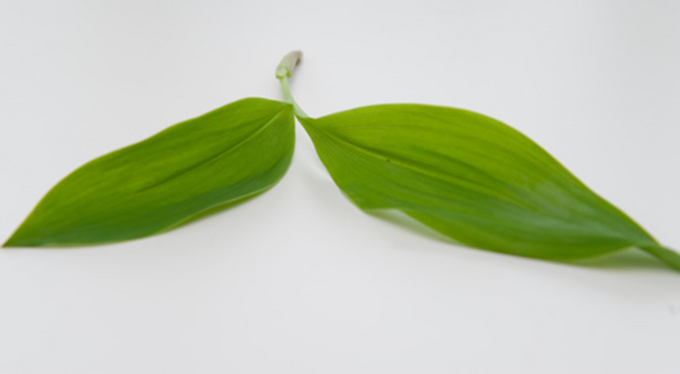
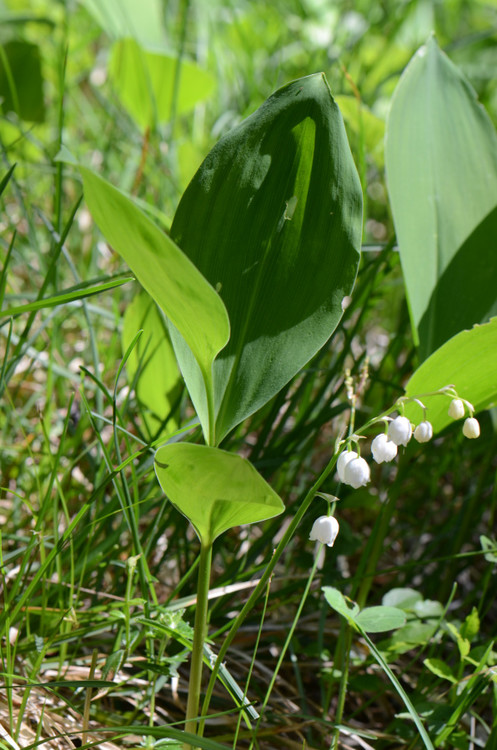
Confusion with the lily of the valley(Convallaria majalis L.) can lead to considerable health problems. However, life-threatening poisoning is rare.
Lily of the valley tends to grow in dry locations and grows somewhat later than the first wild garlic leaves:
- They usually have two or three basal leaves that form a leaf sheath
- The apparent stem is green above and reddish below, the leaf blades of the lily of the valley are shiny light green on the underside
- The leaves are rather flexible, almost "rubbery"
- As with the autumn crocus, lily of the valley leaves do not smell of garlic
The lily of the valley contains cardiac glycosides (especially convallatoxin), which can cause nausea, vomiting, diarrhoea and increased palpitations (racing heartbeat).
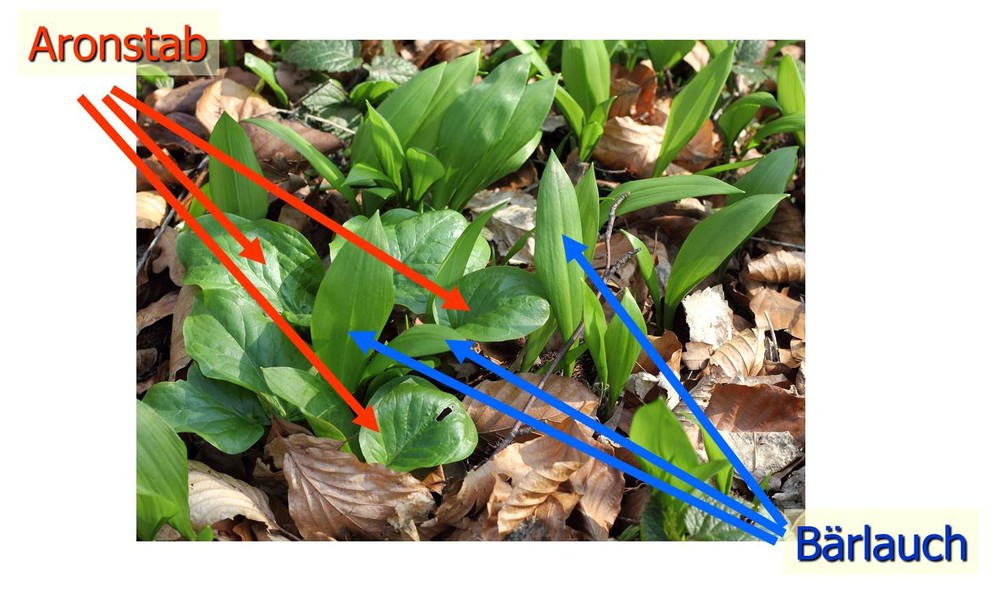
The spotted arum(Arum maculatum L.) is highly poisonous in all parts of the plant (flower, leaves, underground organs). A characteristic feature to distinguish it from wild garlic is the leaf veining:
- In contrast to the parallel leaf veins of wild garlic, the leaves of spotted arum have a reticulate leaf veining. This lattice structure is particularly well visible on the underside of the leaves
- Older plants have clearly arrow-shaped leaves, in younger plants this feature is not yet so pronounced
Arum tastes very pungent and can cause severe skin and mucous membrane irritation. The skin irritations are caused by pungents and calcium oxalate crystals. This skin-irritating effect of the arum stick is noticed immediately when consumed. Burns of the oral mucosa may occur. In addition to the pungents and calcium oxalate crystals, other toxic substances such as cyanogenic glycosides and saponins are present. Even though symptoms of poisoning in humans are rather rare, special care should be taken with children due to the high toxicity (e.g. by eating the red berries). Serious and fatal effects have been observed especially in grazing cattle.
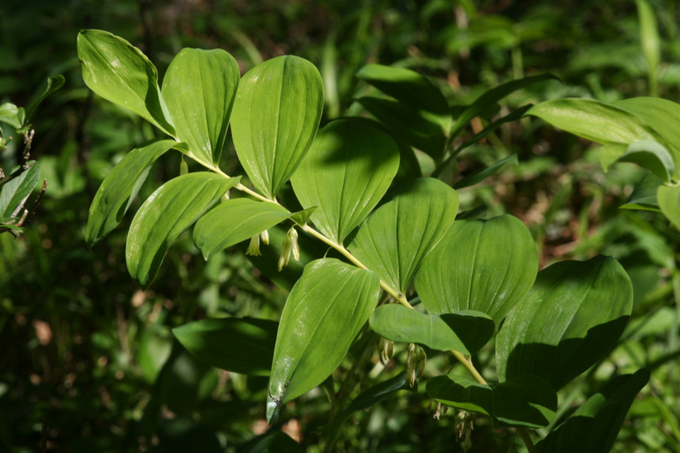
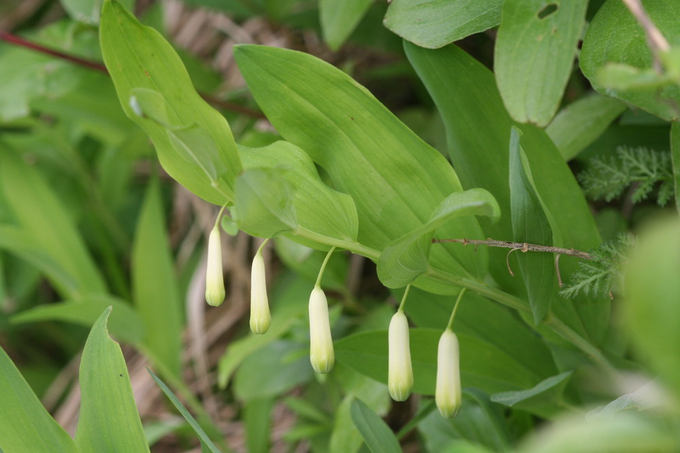
The genus Polygonatum (Polygonatum sp. Mill.) consists of numerous species, including native species. All parts of the plant (especially the berries) are poisonous and contain toxic saponins and other toxins. Polygonatum multiflorum (L.) All., also known as many-flowered Solomon's seal, grows at similar times and in similar places to wild garlic, which means that this plant can be confused due to some visual similarities:
- The individual leaves have a similar shape to those of wild garlic. The decisive distinguishing feature from wild garlic is that the leaves sit alternately on the upright stem
- The white flowers are located on the underside of the plant and hang down in a bell shape
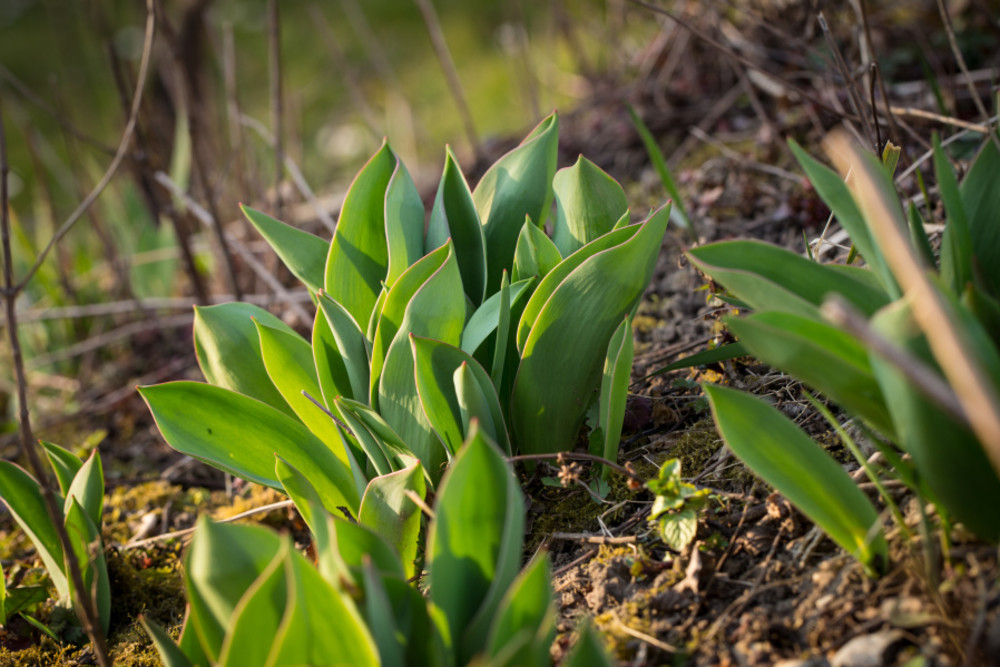
The leaves of the poisonous tulip (Tulipa sp. L. and its hybrids) can also be mistaken for those of wild garlic, and hybrids can run wild and occur in the same locations as wild garlic.
If they do not flower, tulips only produce a single leaf that is similar to that of wild garlic. Anyone cultivating wild garlic in the garden should therefore take care not to inadvertently harvest tulip leaves:
- Like the wild garlic leaf, the tulip leaf is divided into a lanceolate leaf blade and a thin leaf stalk
- However, the leaves are usually blue-green, thick and fleshy with a waxy coating
Salivation, nausea, vomiting, abdominal pain and diarrhoea can occur just 15 minutes after consumption.
Further information on the collection of wild plants can be found in the recommendation of the Austrian list of edible wild plants and flowers.
In future, AGES will also analyse toxic substances (e.g. convallatoxin, cholcicin) in foods containing wild garlic.
Last updated: 08.05.2025
automatically translated